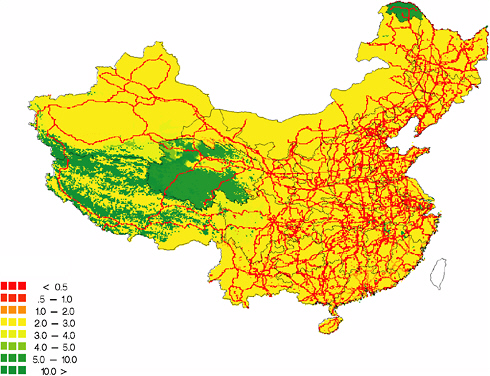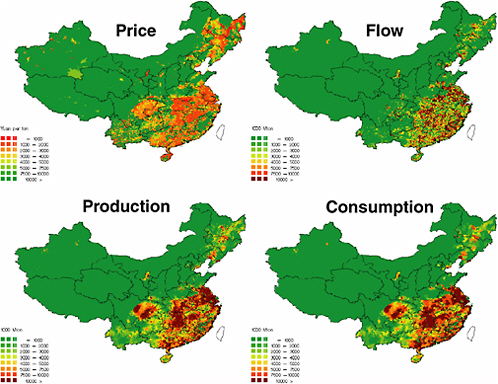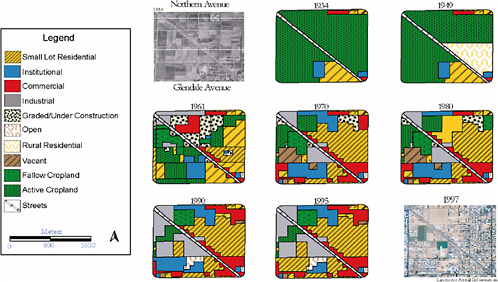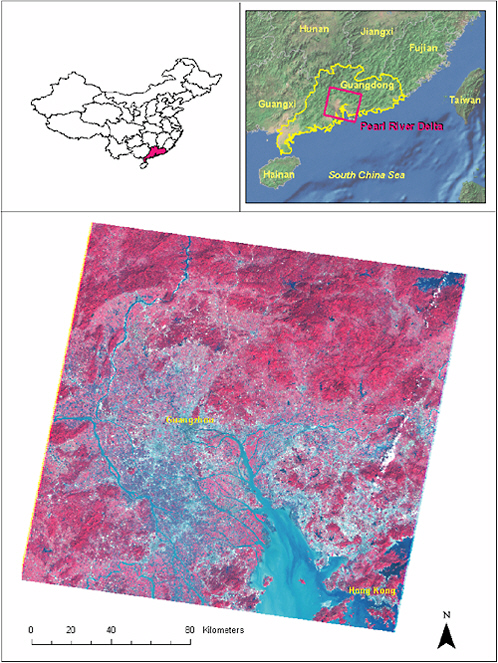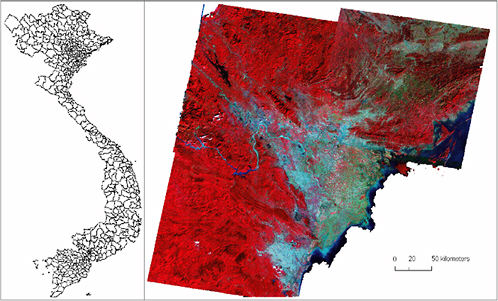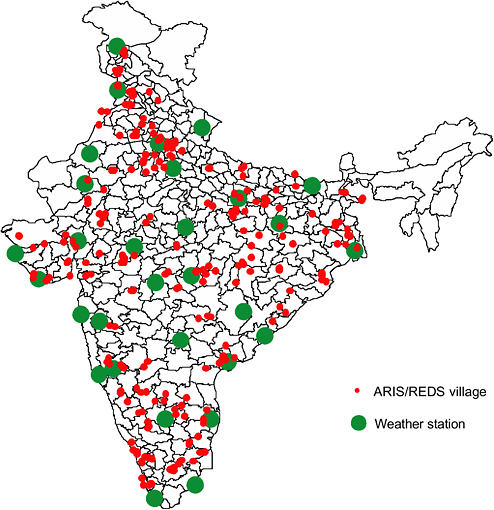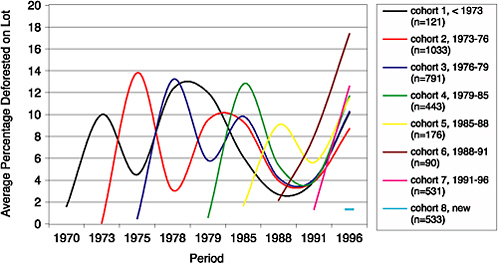
PLATE 3 The Colonist Footprint: Average deforestation trajectories across cohorts. The cohorts refer to dates when groups of settlers first arrived at this location and the deforestation trajectory is the average area deforested by each group or cohort. Adapted from Brondizio et al. (2002).
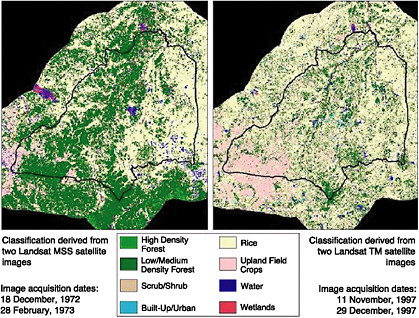
PLATE 4 Image comparison of land use and land cover in Nang Rong district (bounded by dark irregular line) and a surrounding 10 km buffer area, 1972-1973 and 1997.
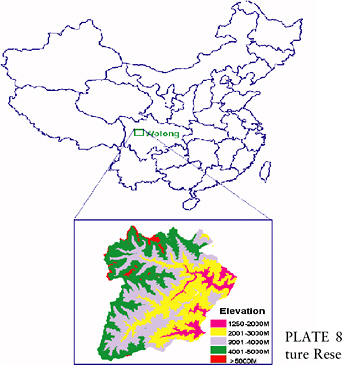
PLATE 8 Location of Wolong Nature Reserve.
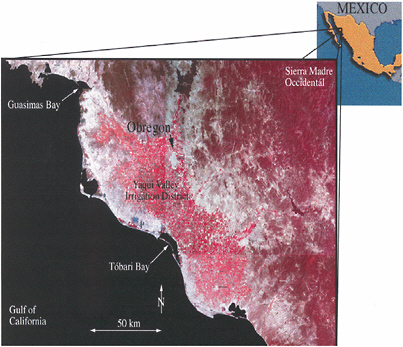
PLATE 9 Yaqui Valley study region in Northwest Mexico. The satellite image is a three-band color composite from Landsat data. Agriculture and other regions of green vegetation show up as red. Water shows as black or blue and urban or barren land show as grey or white.

